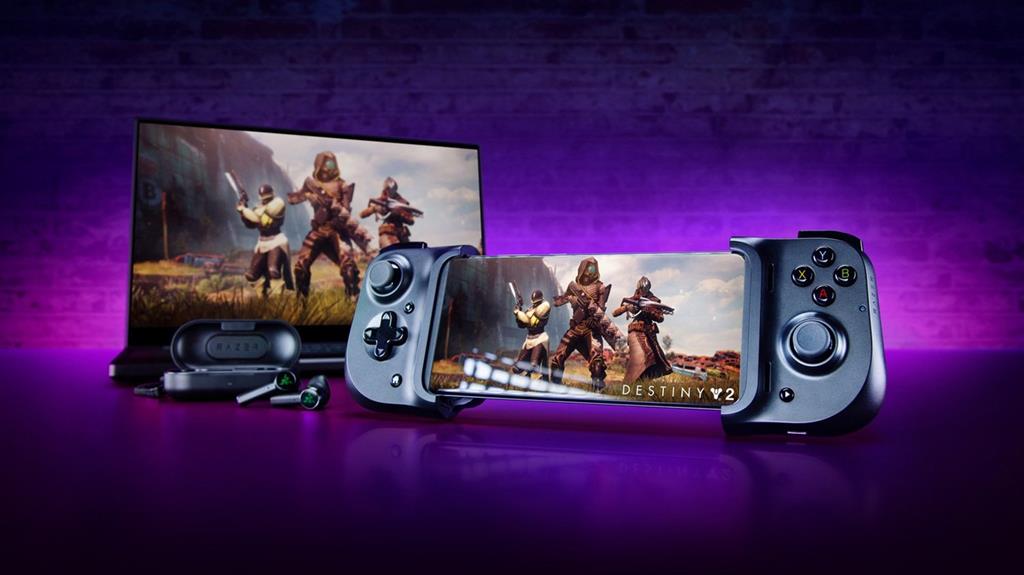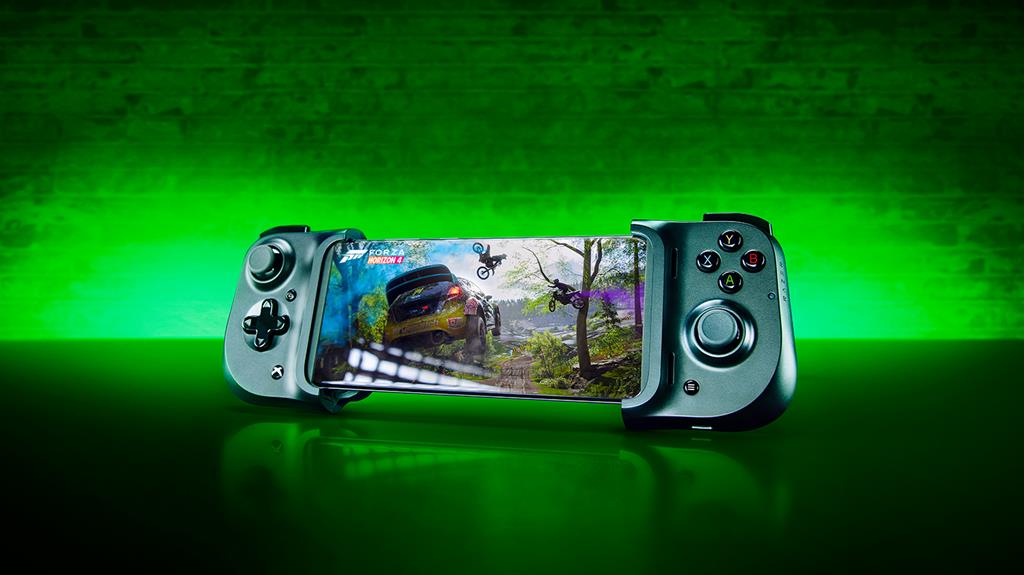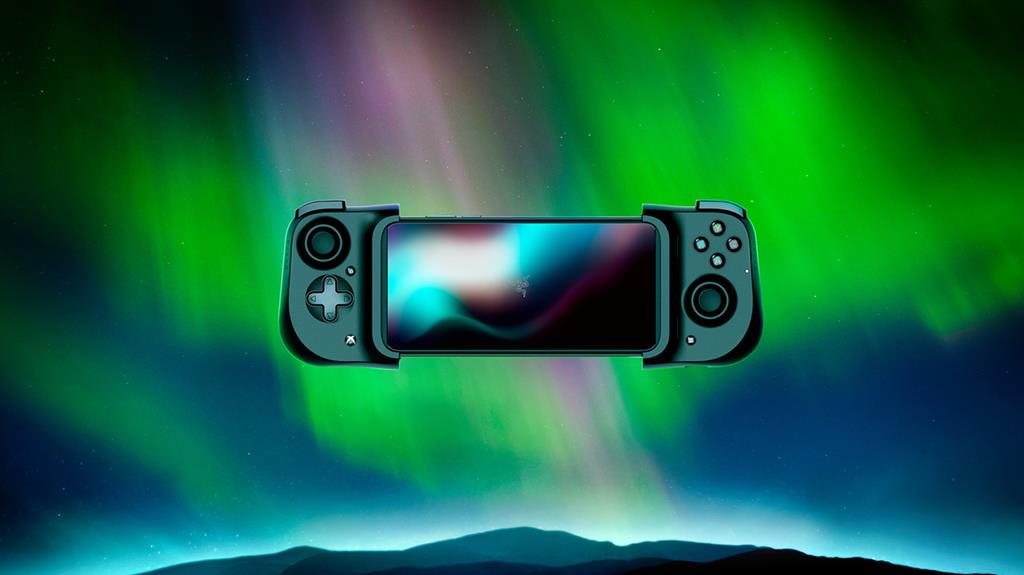
The first time you played a game on your mobile device, you were probably in awe of how well Snake had transitioned into the Nokia brick that you were holding in your hand. Fast forward a few years later, and mobile gaming isn’t just a distraction, it’s a veritable way of life. While the mobile marketplace may be littered with all manner of shovelware games, there are some genuine gems to be found, and with the launch of cloud gaming services such as Microsoft’s Project Xcloud and Google Stadia, proper full-fledged games as well that were pulled from console and PC.
It’s just a pity that playing them on a mobile device is rather rubbish. Power isn’t an issue here thanks to the snappiest of dragons under the smartphone hood, but rather, control. It’s a claustrophobic experience playing a mobile game, as response times lag, your digits cover up important information and the contortions you have to pull off will leave your thumbs aching for ages.

Razer’s Kishi is the solution to this dilemma, a peripheral that for all intents and purposes transforms your phone into a Nintendo Switch. It’s lithe and nimble, fits a wide variety of devics, and it also has a portable form factor to its build. At first glance, it looks like the kind of controller that you’ve become accustomed to since 1995: Four face buttons, two analogue sticks, four bumpers, a D-pad, and three extra option buttons.
They all feel brilliant as well. The bumpers have a nice spring-loaded build to them, the analogue sticks feature a concave design for your thumbs to rest inside of and the face buttons, while a bit on the small side, actuate nicely and feel like they can withstand some sweaty hammering on a sleepless night. The only weakpoint here is the D-pad, which feels cheaper than Checker chips in action. It’s capable, but it’s not exactly Evo tournament fighting game ready either.

The actual ergonomics aren’t too bad either, featuring nice and chunky rounded handholds that the Nintendo Switch and its carpal-tunnel inducing design could learn a thing or two from. All of this is wrapped up in a package that is still definitively Razer but without the need to shove it in your face like Monster Energy drink advertising: Just a good ol’ black finish with a tuch of engraved logo on the rear. Nice and simple.
That you can snap the Kishi together to make it more compact is also another plus, and while it won’t be pocket-friendly, it’s still much easier to cart one of these around in your pack rather than a bluetooth controller and a cradle. So how does it handle then? I used it with my Huawei P30 Pro, and it took to that phone easy enough, although anything other than the standard black monolith design of phones today will probably result in some squishy wrestling. With a Samsung S8 on the other hand, there was a more awkward fit. As a reminder, your phone needs to have a USB-C connector for the Kishi to link with it.
Activating the Kishi is pretty much a case of plug ‘n play, but here’s the catch with this device: The games that feature Kishi support are rather limited. Sure you can jam a few sessions of Fortnite easy enough, as I have a feeling that this is who the controller was aimed at, or at least you were able to before Epic Games decided to pick a fight with Google and Apple.

But Call of Duty Mobile or PlayerUnknown’s Battlegrounds? At the time of writing, I couldn’t get those games to work either, as Razer still needs to map the controls to them. Razer’s got a list of games that will work with the Kishi, but be warned: They’re mostly rubbish, free-to-play garbage that’s front-loaded with microtransactions and adverts that you wouldn’t even consider playing before swiping left and watching Tiktok cosplay videos.
There are a few gems to be found such as several Final Fantasy games, Jade Empire, and Metal Slug, but they’re buried underneath a pile of crapware. For what it’s worth though, the Kishi does make gaming far more comfortable and responsive. The actual hardware feels like quality plastic and it’s incredibly comfortable to wrap your hands around it, provided that your phone fits its mercurial design.
Last Updated: October 7, 2020
| Razer Kishi | |
|
The idea is undeniably solid, and with some more fine-tuning while putting in some extra effort to focus on big-name mobile games, Razer could be well-positioned to take advantage of the looming cloud gaming boom.
|
|
|---|---|





















MechMachine
October 7, 2020 at 14:50
@darryn, This is the great equalizer of the next gen consoles. Not the T Flops, A Marketing hype thing that MS actually created to sell consoles. This Digital Foundry video explains why ray tracing is such a resource hog and will mean a serious hit in visual fidelity if you want to see 60 fps 4k games. Something that is easily achievable with normal rasterization, But becomes exponentially harder with ray tracing enable. No matter how good you think either console it is. Forget 120 fps at 4k with ray-tracing enable at any respectable visual fidelity.
And @Pieter, if you think the Series X is going to do much better at higher frame rates, you better be ready for disappointment my friend, because it may be, let’s say, 10 percent better, but it will still be just as ” compromised ” as explained in this breakdown by digital foundry. It’s friggen ray tracing.
Now, I have to add that I have seen a good few examples of the incredible load times of the PS5, And I have to say that Sony has delivered on their vision. I also have to add that the reflections in games will look insane, despite the resource management going on and the marketing battle going on is actually pretty dumb. I still think MS has failed to deliver what Sony have, Next Gen game-play. Halo was clearly a developer issue.
I know I am setting myself up for failure here, but I do believe that Ray tracing is not the killer next gen feature that will define this generation. Maybe mid cycle when we get a Pro or XX.It’s all just marketing hype.
https://www.youtube.com/watch?v=crjbA-_SoFg